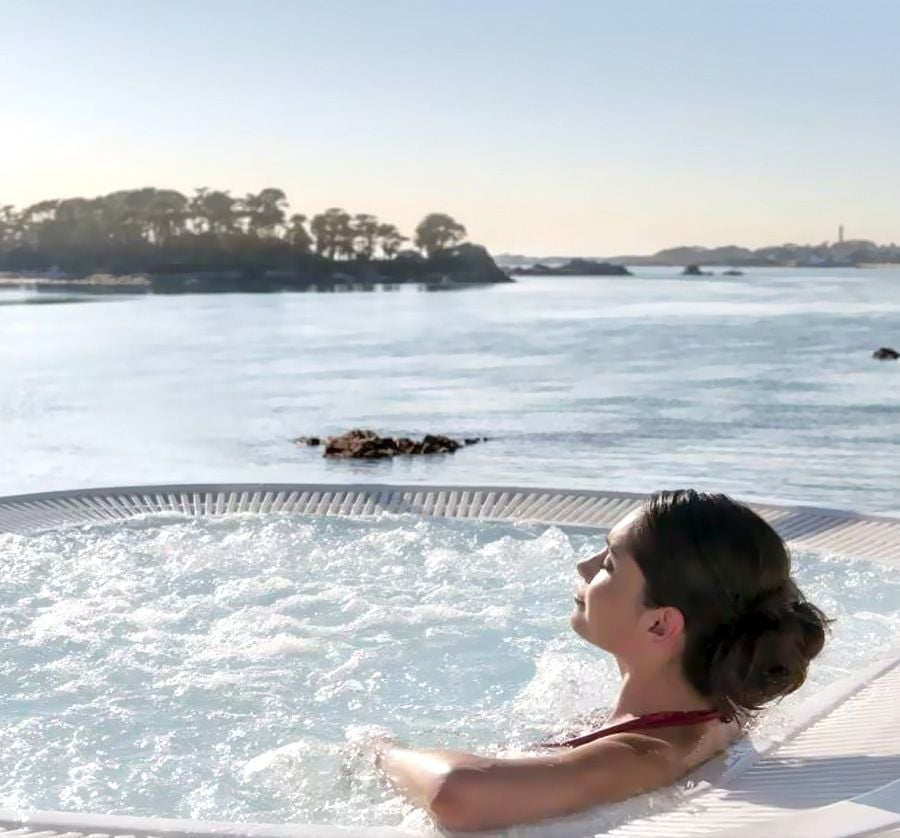A small, sweet or savoury treat to enjoy on the go or at one of the region’s many creperies. From traditions to recipes, we share with you one of Britany's number one speciality.
Long live the Crusades!

While the first cakes made with water and cereals and cooked on a hot stone date back to 7000 BC, in Brittany, the crêpe first appeared in the 13th century. Buckwheat – black wheat brought back from Asia to France after the Crusades, and whose cultivation is well adapted to the Breton climate – became the main ingredient.
A beautiful curl
In Breton language, the crêpe is called “krampouezenn” (plural, “krampouezh”). In French, the word crêpe comes from the Latin ‘crispus’, meaning curly. When it’s well measured out onto a hot plate, a ladleful of batter takes this curly form in just a few seconds. The “crisp” became the pancake – though could be called the ‘curly’!
Crêpe or galette?

Bretons themselves don’t always agree, but beware of confusing crêpes with galettes! In the pancake, typically sweet, white wheatflour and milk replace buckwheat and water. Eggs are also added. Galettes, made with water and buckwheat flour, are typically eaten savoury. In both cases, apple juice and Breton cider are delicious accompaniments.
Sunshine on a plate
Celebrated on 2nd February, 40 days after Christmas, Candlemas – a candlelight festival according to religious tradition – became the pancake festival. Supposedly during the 5th century in Rome, Pope Gelasius I comforted pilgrims with pancakes, a symbol of the return of sunny days and abundant harvests. With their golden roundness, pancakes evoke the light, the sun and the spring – even if in Brittany, you can eat them all year round.
Bilig, rozell and sleight of hand

To make authentic pancakes, you need the right equipment. The bilig (or pilig) is the circular, cast iron baking pan on which pancakes are made, also called a crêpe maker, tuile or galettière. It is used with a small wooden T-shaped rake, the rozell, to spread the batter; and a spatula, the spanell, to flip the pancake. It sounds easy, but to make a smooth, evenly-cooked pancake, it takes practise.
96cm of happiness
Between 33 and 55cm for the largest, the size of a pancake varies according to the diameter of bilig. Every summer since 2004, Gourin in central Brittany has hosted the international competition for the largest pancake with a giant bilig measuring 1.02 metres across. The record to beat: a crêpe of 96cm made in 2005! Who can do better?
Butter & sugar or a sausage galette

The classic butter & sugar pancake, always using salted butter from Brittany, is the one of the favourites. Those garnished with the divine salted butter caramel, jam or chocolate are also very popular. The ‘complet’ (eggs, ham and cheese) is the queen of the galettes. To satisfy big appetites, there’s nothing better than a sausage galette, sold at all the markets in Brittany.
Dentelle and Suzette
It was from leaving a crêpe on the bilig for too long in 1886 that the recipe for the dentelle (lace) crêpe was born. Well cooked, then rolled eight times around the spatula, this crispy crêpe became the flagship of the Loc Maria biscuit factory in Quimper, who named it the Gavotte. Crêpe Suzette, flambéed with orange liqueur and sugar, was invented on the Côte d’Azur when Edward VII, future king of England, fell in love with the creation and named it after his female companion.
The backflip

Happiness, prosperity and fertility. Flipping a pancake in a frying pan on 2nd February while squeezing a piece of gold in the left hand is a 15-year-old tradition. But without practise, beware of dropping it!
Find out more: Prepare your trip to Brittany
Read on: Breton cuisine

By Pascale Filliâtre
Journalist-traveller. I often voyage to the end of the world to explore what France offers... just next door. [email protected]






